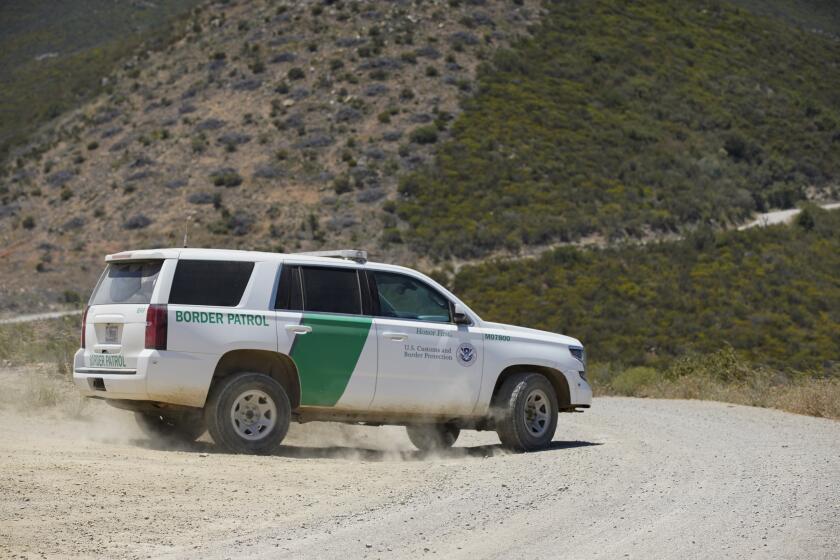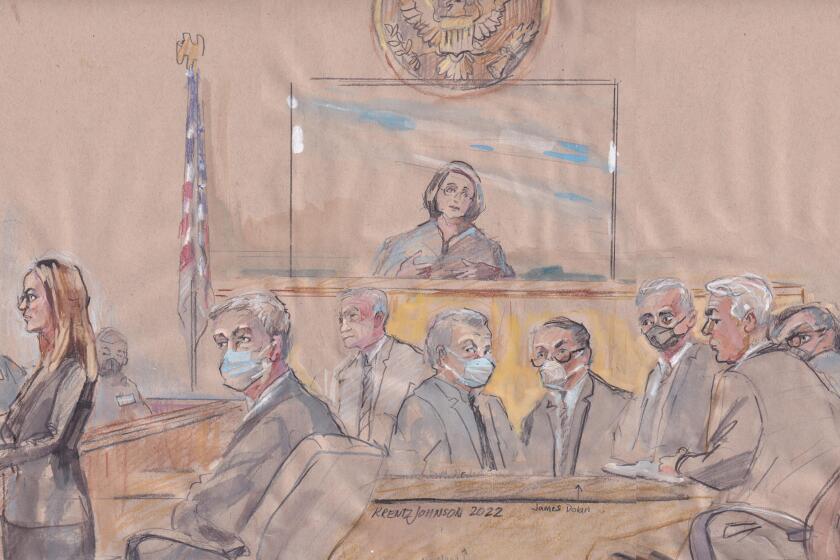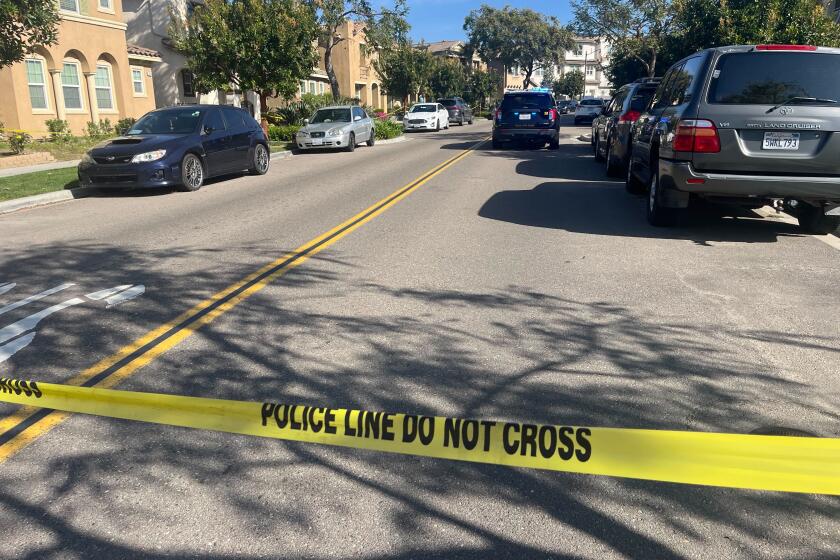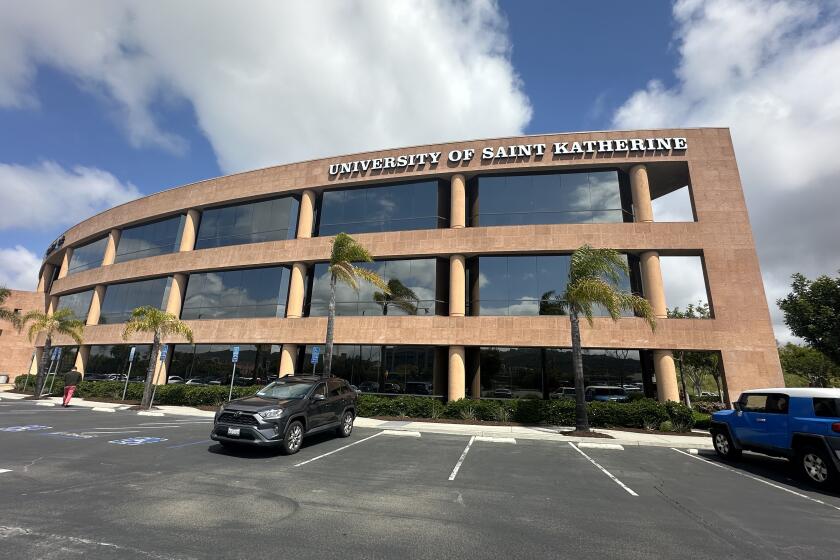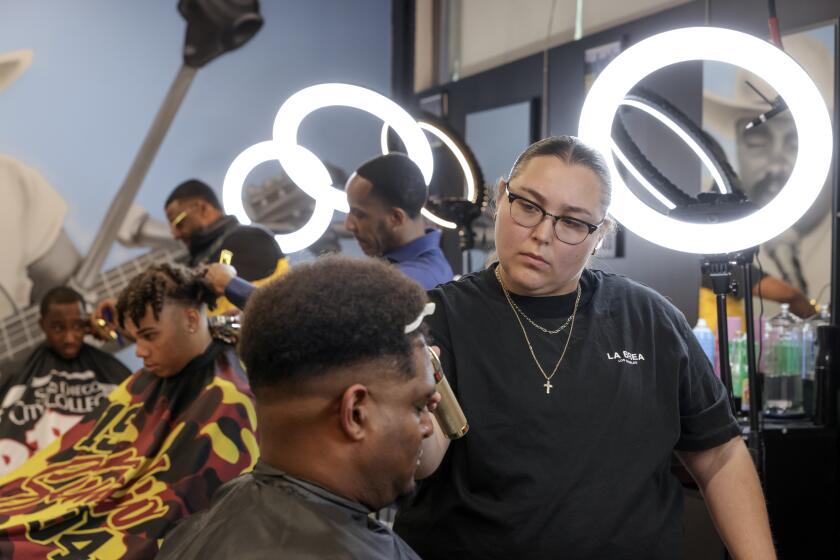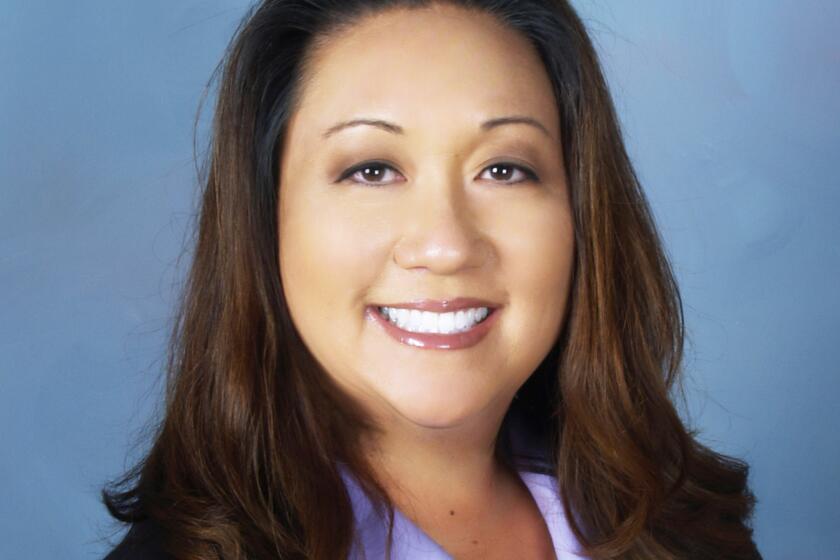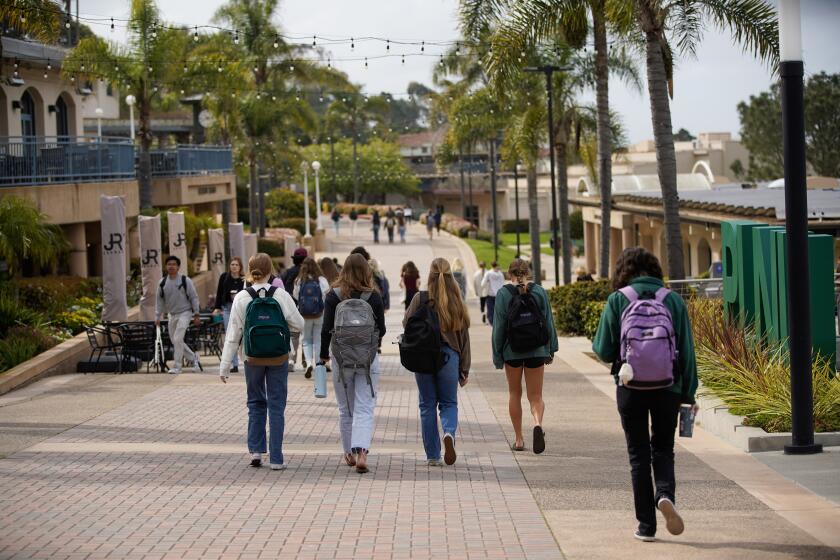Girls Take Flight gives San Diego high school girls life-changing drone skills
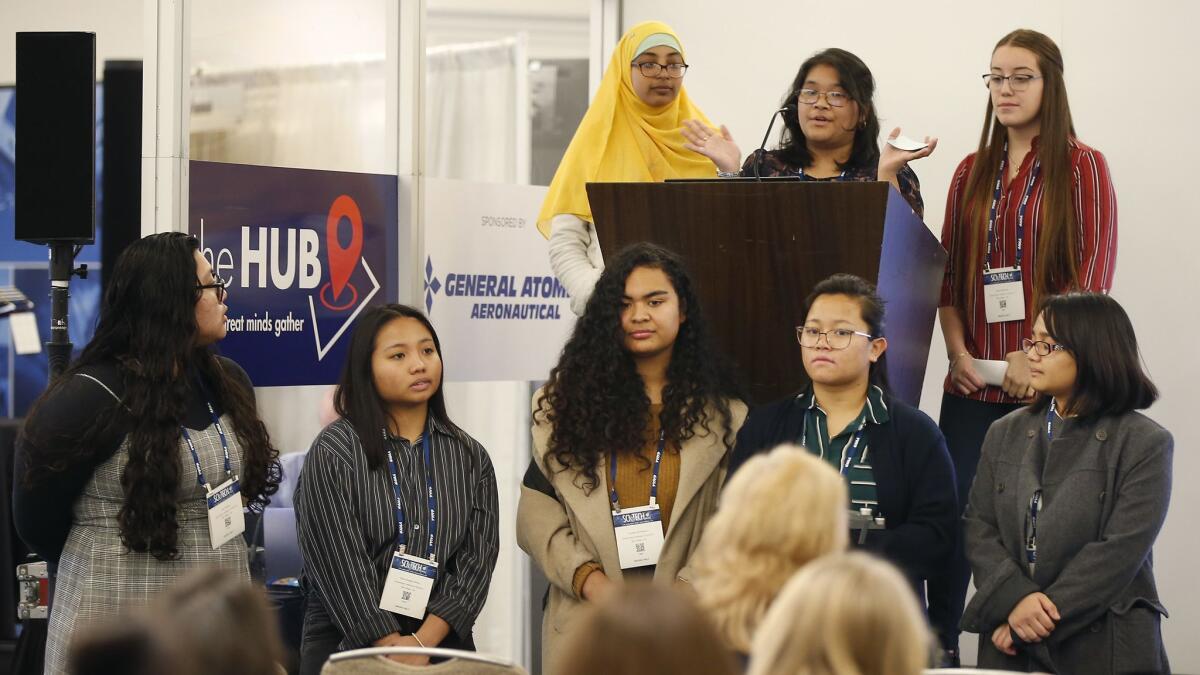
Masiti Ahmed and Airyel Montana, high school students from San Diego, are both acutely aware that the drone industry, and the overall aerospace industry, are dominated by men.
According to the most recent statistics from the Federal Aviation Administration, just 5 percent of certified drone pilots and seven percent of licensed airplane pilots are women.
“That kind of bummed me out,” said Ahmed, a student at Crawford High, of learning how underrepresented women are in the field of commercial drones. “I wanted to prove them wrong.”
It was a big part of why Ahmed, Montana and eight other San Diego high school girls — mostly from southeastern San Diego — participated in the first “Girls Take Flight” drone program at the Elementary Institute of Science in Valencia Park.
The 32-week internship, which required a minimum of 130 hours of instruction to complete, culminated Friday with a graduation ceremony for the 10 girls, who will each receive a $1,500 stipend — more than enough to buy their first drone, as several of the girls said they planned to do.
But more meaningful than the graduation ceremony, and maybe even the stipend: Seven of the 10 girls became FAA-certified commercial drone pilots, chipping away ever so slightly at the field’s gender disparity.
“Every one of them has had their lives changed by the program,” Jim Stone, executive director of the Elementary Institute of Science, said last week. “That is a result of the hard work they put into the program.”
Ahmed agreed while addressing a crowd Thursday during a presentation at the American Institute of Aeronautics and Astronautics’ 2019 Science and Technology Forum and Exposition.
The event was held at the Manchester Grand Hyatt in downtown San Diego.
“I worked really hard for this, the hardest I’ve ever worked in my life for anything,” Ahmed said of completing the program and passing the grueling 60-question FAA certification exam. “I’m really proud of myself.”
‘We don’t really have a lot of opportunities’
Of the program’s 10 participants, all juniors and seniors between 16 and 18 years old, six attend Morse High, two are from Crawford High, and there is one each from Hoover High and Bonita Vista High.
“The internship for me has been a privilege, because not many girls of color have opportunities regarding the engineering field, especially those coming from low-income areas,” one of the students, who was not identified, said in a video about the program that was presented Thursday at the aeronautics forum.
Montana, who has since transferred to Bonita Vista in the Sweetwater Union High School District, said a history teacher at Morse, her original high school, introduced her and the other participants from that school to the Girls Take Flight program.
“I was originally from Morse, and down there, not a lot of kids have opportunities to do this kind of stuff,” Montana said.
Ahmed agreed: “I’m from Crawford High School. I’m from City Heights, and because of that, we don’t really have a lot of opportunities.”
The chance to become part of Girls Take Flight began last February, first through assemblies and information sessions at schools, and then a more in-depth informational meeting in February at the Elementary Institute of Science. About 65 girls attended, Stone said.
“They were introduced to a number of women who were involved in the drone industry. they were introduced to drone careers and technology, and they were invited to apply for a one-week camp,” Stone told attendees at last week’s forum.
Twenty of the girls attended the camp, which Stone described as a teaser for the full-fledged internship. Half of the camp attendees were then chosen for the 32-week program.
“This is the first program of its kind in California and there is nothing like it in the entire country where high school girls are spending this much time studying and flying drones and earning their FAA remote pilot certification,” Stone said.
“We are excited to have a unique program like this in San Diego,” San Diego Unified School Board member Sharon Whitehurst-Payne said in a statement. “This is the kind of thing that can have a powerful impact and change a person’s life.”
Interest in the drone industry
Keeping with the spirit of empowering girls to become part of the drone industry, the Girls Take Flight program was led by two women: Anjelica Thang, a data management specialist at the Elementary Institute of Science, and Desi Ekstein, a Lake Elsinore-based drone pilot known as “Drone Diva Desi.”
“The program was started because there was an interest in the drone industry, because San Diego was selected as one of the places to research drones,” Thang said, referring to the U.S. Department of Transportation’s Unmanned Aircraft Systems Integration Pilot Program.
With no real model of how a drone education program might work, Thang turned to the hands-on approach she said the Elementary Institute of Science is known for.
“We decided we’re going to make it focused in coding, we’re going to make it focused in teaching the girls how to fly,” Thang said. “Giving them that hands-on experience.”
The students first learned how to code, an essential part of operating autonomous drones, and how to program. Then, they had to learn how to build a drone from a disassembled kit.
“The girls had to learn how to put it together — what actually makes it fly … (and) how the propellers give them the lift they need.”
Once they understood coding, programming and assembling a drone, they began learning to fly the small, indoor-approved drones they’d built themselves. After they learned to fly the smaller device, they moved on to outdoor flying with a DJI Mavic Pro.
After mastering the basics, the girls worked on five projects, which included learning drone safety and cinematography.
“We structured Girls Take Flight like a tech boot camp,” Thang said. “These 10 girls came through with flying colors.”
The ways that the graduates plan to use their newfound knowledge, and their FAA certifications, are as diverse as the group itself.
Montana, who ultimately wants to go to law school, said she first plans to join the Air Force, where she hopes to put her drone mastery to use. Before that, she plans to put her FAA certification to use immediately by helping her father capture drone footage of the large events where he works as a DJ.
“Because of this program, it influenced me to become a pilot,” Ahmed said. “Now that I’m a certified drone pilot, I want to go to Embry-Riddle Aeronautical University and study aeronautics, and I want to be an aviation pilot.”
Ahmed has also started a drone club at Crawford, she said.
Patricia Jimenez, a senior who has already purchased her own drone, is interested in biology, medicine and humanitarian aid. During the program, she learned about areas of the world where drones are used to deliver medical supplies to doctors working in remote, rural locations.
She hopes to combine her drone skills with her postsecondary studies in the more distant future, but also has more immediate goals: She plans to launch a videography business while in college, both to continue mastering her drone skills, “as well as helping me get money for college,” she said.
“Going forward, there’s talk about tens of thousands of new jobs around the drone industry, and that’s not just pilots, but people to code them, people to build them, people to repair them,” Stone said. “Women are dramatically underrepresented in technology fields like drones, and with programs like this, we are making progress changing that.”
Twitter: @Alex_Riggins
(619) 293-1710
Get Essential San Diego, weekday mornings
Get top headlines from the Union-Tribune in your inbox weekday mornings, including top news, local, sports, business, entertainment and opinion.
You may occasionally receive promotional content from the San Diego Union-Tribune.


